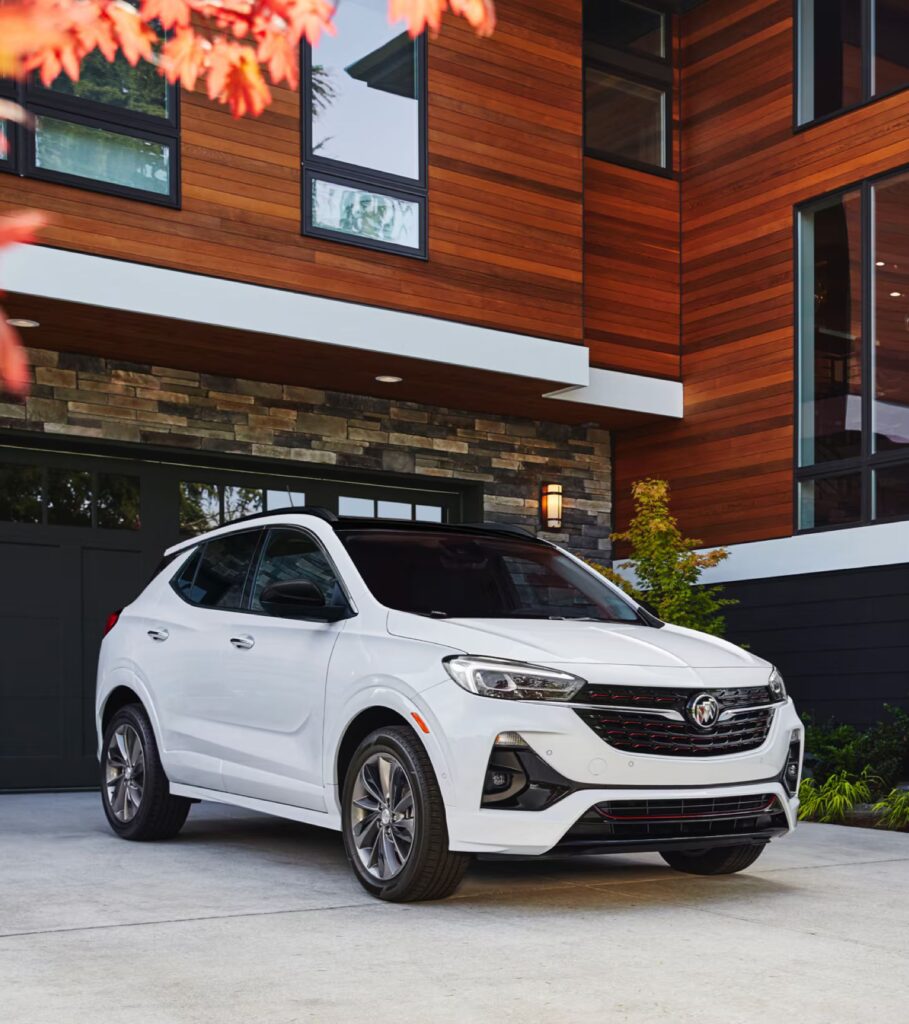
The 1970s stands as a pivotal decade in automotive history, a period of profound transformation where innovation, bold styling, and raw performance converged to create a lineup of vehicles that remain etched in the annals of car culture. It was an era where manufacturers dared to push the boundaries of design, engineering, and speed, forging machines that captivated enthusiasts and the general public alike. From roaring muscle cars to groundbreaking supercars and even surprising subcompacts, the sheer diversity and impact of these vehicles were immense.
This dynamic period saw the birth of automobiles that, despite the passage of time, continue to command immense respect at prestigious car shows and high-stakes auctions. The allure of these ’70s classics is not merely nostalgic; it’s rooted in their distinctive character, their contribution to automotive evolution, and the pure driving experience they offered. They embodied a spirit of mechanical prowess and aesthetic bravado that few other decades could rival, shaping what we understand as automotive excellence today.
In this in-depth exploration, we embark on a journey through the heart of the 1970s, spotlighting 14 iconic cars that have become “long gone but not forgotten.” Our first stop will delve into seven of these automotive legends, focusing on the sheer power, distinctive designs, and trailblazing engineering that defined them. Prepare to rediscover the machines that left an indelible mark on the road and in the hearts of collectors, proving that true automotive greatness transcends time.

1. **1977 Pontiac Firebird Formula**The 1977 Pontiac Firebird Formula epitomized the American muscle car spirit during the twilight years of the decade, standing out with an aggressive stance and an array of potent engines. What truly distinguished the Formula model was its ability to deliver the formidable performance of its more flamboyant Trans Am sibling, yet without the “tacky decals” that sometimes adorned its counterpart. This made it a purist’s choice, favored by those who appreciated raw power and sophisticated, understated aggression.
At its core, the Firebird Formula boasted a “distinctive “shaker” hood scoop,” a visual cue that signaled the serious performance lurking beneath. This iconic feature wasn’t just for show; it fed air directly to a robust V8 engine, enhancing its capabilities. Specifically, with its “400 cubic-inch V8” and that signature “dual-scoop hood,” the Firebird Formula was recognized as both “fast and handsome,” offering a compelling blend of speed and classic Pontiac styling.
Today, this machine is highly “loved by collectors” precisely for that combination of “raw power and classic Pontiac styling.” Its enduring appeal lies in its authentic muscle car experience, embodying a period when American automotive engineering focused intently on delivering thrilling acceleration and a commanding presence on the road. The ’77 Firebird Formula remains a testament to Pontiac’s ability to craft vehicles that were both performance-oriented and aesthetically appealing, cementing its place as a cherished classic.
Car Model Information: 1983 Pontiac Firebird Trans Am 2D Coupe
Name: Pontiac Firebird
Caption: The second, third, and fourth generations of,the Pontiac Firebird Trans Am
Manufacturer: Pontiac (automobile)
Production: February 23, 1967 – August 30, 2002
ModelYears: 1967 – 2002
Class: Pony car,Muscle car
Platform: GM F platform
Related: Chevrolet Camaro
Layout: Front engine, rear-wheel-drive layout
Categories: 1970s cars, 1980s cars, 1990s cars, 2000s cars, All articles with dead external links
Summary: The Pontiac Firebird is an American automobile built and produced by Pontiac from the 1967 to 2002 model years. Designed as a pony car to compete with the Ford Mustang, it was introduced on February 23, 1967, five months after GM’s Chevrolet division’s platform-sharing Camaro. This also coincided with the release of the 1967 Mercury Cougar, Ford’s upscale, platform-sharing version of the Mustang.
The name “Firebird” was also previously used by GM for the General Motors Firebird series of concept cars in the 1950s.
Get more information about: Pontiac Firebird
Buying a high-performing used car >>>
Brand: Pontiac Model: Firebird
Price: $22,991 Mileage: 38,257 mi.
Read more about: The Smart Money’s Secret: 8 Undervalued Classic Cars Experts Say Are Poised for Significant Appreciation
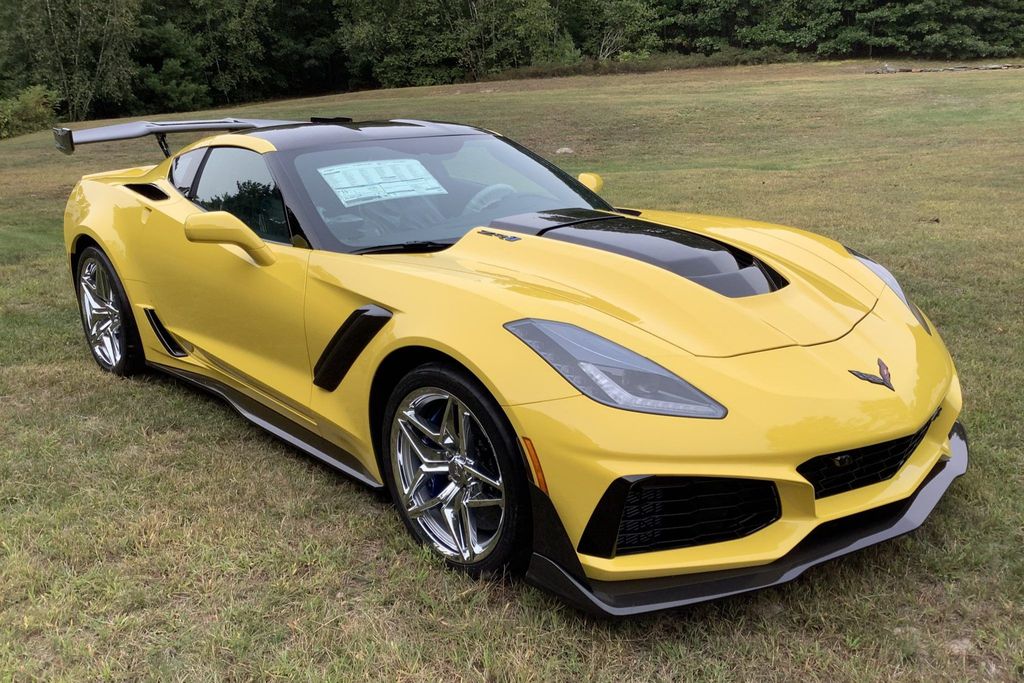
2. **1972 Chevrolet Corvette**The 1972 Chevrolet Corvette holds a unique and revered position in the annals of American sports car history, marking the “last year of both chrome bumpers” at the front and rear. This particular distinction instantly sets it apart, lending it a classic aesthetic that collectors deeply appreciate. Its “aerodynamic “Shark” body” design was nothing short of revolutionary for its time, creating a visual impact that remains striking even today, contributing to its status as one of the “most recognizable Vettes ever made.”
Beyond its iconic exterior, the 1972 Corvette’s “sport cockpit” was designed to immerse the driver in a high-performance environment, hinting at the power contained within. Underneath its sculpted hood, the “engine bay cradled a 454 cubic-inch V8 with ear-shattering horsepower.” This “big-block 454 engine” option was a testament to Chevrolet’s commitment to raw power, delivering an exhilarating driving experience that solidified its reputation as a true American muscle machine.
Today, the 1972 Corvette is “prized by collectors for its bold mix of American muscle and unique styling that can’t go unnoticed in any garage.” Its blend of aggressive performance capabilities and a distinct design language makes it a standout. The combination of its potent engine, groundbreaking aesthetics, and its historical significance as the last of a certain design era ensures its continued desirability and appreciation in the classic car market.
Car Model Information: 2023 Chevrolet Corvette 3LZ
Name: Chevrolet Corvette
Caption: 2021 Chevrolet Corvette C8
Manufacturer: Chevrolet
Production: 1953–present
ModelYears: bulleted list
Assembly: bulleted list
Class: Sports car
BodyStyle: coupé
Layout: Front-engine, rear-wheel-drive layout,Rear mid-engine, rear-wheel-drive layout
Categories: 1950s cars, 1960s cars, 1970s cars, 1980s cars, 1990s cars
Summary: The Chevrolet Corvette is a line of American two-door, two-seater sports cars manufactured and marketed by General Motors under the Chevrolet marque since 1953. Throughout eight generations, indicated sequentially as C1 to C8, the Corvette is noted for its performance, distinctive styling, lightweight fiberglass or composite bodywork, and competitive pricing. The Corvette has had domestic mass-produced two-seater competitors fielded by American Motors, Ford, and Chrysler; it is the only one continuously produced by a United States auto manufacturer. It serves as Chevrolet’s halo car.
In 1953, GM executives accepted a suggestion by Myron Scott, then the assistant director of the Public Relations department, to name the company’s new sports car after the corvette, a small, maneuverable warship. Initially, a relatively modest, lightweight 6‑cylinder convertible, subsequent introductions of V8 engines, competitive chassis innovations, and rear mid-engined layout have gradually moved the Corvette upmarket into the supercar class. In 1963, the second generation was introduced in coupe and convertible styles. The first three Corvette generations (1953–1982) employed body-on-frame construction, and since the C4 generation, introduced in 1983 as an early 1984 model, Corvettes have used GM’s unibody Y‑body platform. All Corvettes used front mid-engine configuration for seven generations, through 2019, and transitioned to a rear mid-engined layout with the C8 generation.
Initially manufactured in Flint, Michigan, and St. Louis, Missouri, the Corvette has been produced in Bowling Green, Kentucky, since 1981, which is also the location of the National Corvette Museum. The Corvette has become widely known as “America’s Sports Car.” Automotive News wrote that after being featured in the early 1960s television show Route 66, “the Corvette became synonymous with freedom and adventure,” ultimately becoming both “the most successful concept car in history and the most popular sports car in history.”
Get more information about: Chevrolet Corvette
Buying a high-performing used car >>>
Brand: Chevrolet Model: Corvette
Price: $132,990 Mileage: 1,614 mi.
Read more about: Unleashing American Thunder: The 13 Most Iconic Muscle Cars Ever Built for Speed Enthusiasts

3. **1974 Lamborghini Countach (LP400)**The 1974 Lamborghini Countach LP400 was nothing short of a paradigm shift in the world of exotic sports cars, radically altering perceptions of what a high-performance vehicle could look like and achieve. Its “groundbreaking wedge design” was a direct challenge to the automotive conventions of its era, introducing a “futuristic look” that appeared to be plucked straight from a science fiction film. This audacious design philosophy, combined with its “scissor doors,” became an instant hallmark of the Countach, defining supercar aesthetics for decades to come.
At the heart of this mechanical marvel was a “V12 mid-mounted engine,” a configuration that not only contributed to its exceptional performance but also to its balanced handling characteristics. The LP400 represented the “most original and pure form of the Countach,” characterized by its “svelte lines and unadulterated performance.” This early iteration of the Countach was a declaration of intent from Lamborghini, signaling their prowess in creating vehicles that were as visually stunning as they were blisteringly fast.
Due to its audacious design, revolutionary engineering, and “limited production numbers,” the 1974 Lamborghini Countach LP400 rapidly ascended to “early supercar status.” Its profound impact on automotive design and its inherent rarity have ensured its place as “one of the most sought-after cars from the 70s.” Owning an LP400 today is not just possessing a car; it’s holding a piece of design history, a testament to a company’s bold vision that forever changed the definition of an exotic automobile. Its market value, ranging from “$1.2M – $2.5M,” speaks volumes about its undeniable legacy.
Car Model Information: 1989 Lamborghini Countach 25th Anniversary
Name: Lamborghini Countach
Caption: Lamborghini Countach LP5000 QV
Manufacturer: Lamborghini
Production: 1974–1990
Assembly: Sant’Agata Bolognese
Designer: Marcello Gandini
Class: Sports car
BodyStyle: coupe
Layout: Longitudinal engine,mid-engine,rear-wheel-drive
Related: Lamborghini LM002
Engine: Lamborghini V12,V12 engine,LP400, LP400 S: {{cvt,3929,cc,L,1,disp=flip
Transmission: synchromesh,Manual transmission
Wheelbase: 96.46 in
Abbr: on (LP5000QV)
Order: flip
Length: 162.99 in
Width: LP 400: {{cvt,74.28,in,mm,0,abbr=on,order=flip
Height: 42.13 in
Weight: {{convert,1300.5,kg,lb,0,abbr=on
Predecessor: Lamborghini Miura
Successor: Lamborghini Diablo
Doors: Scissor doors
Sp: uk
Categories: 1980s cars, 1990s cars, All articles with unsourced statements, Articles containing Italian-language text, Articles containing Piedmontese-language text
Summary: The Lamborghini Countach ( KOON-tahsh) is a rear mid-engine, rear-wheel-drive sports car produced by the Italian automobile manufacturer Lamborghini from 1974 until 1990. It is one of the many exotic designs developed by Italian design house Bertone, which pioneered and popularized the sharply angled “Italian Wedge” shape.
The wedge style was introduced to the public in 1970 with the Lancia Stratos Zero concept car. The first showing of the Countach prototype was at the 1971 Geneva Motor Show, as the Lamborghini LP500 concept.
The “Countach” nameplate was reused for the Sián-based limited-production hybrid-electric model called the Countach LPI 800-4 in 2021.
Get more information about: Lamborghini Countach
Buying a high-performing used car >>>
Brand: Lamborghini Model: Countach
Price: Not Priced Mileage: 7,493 mi.
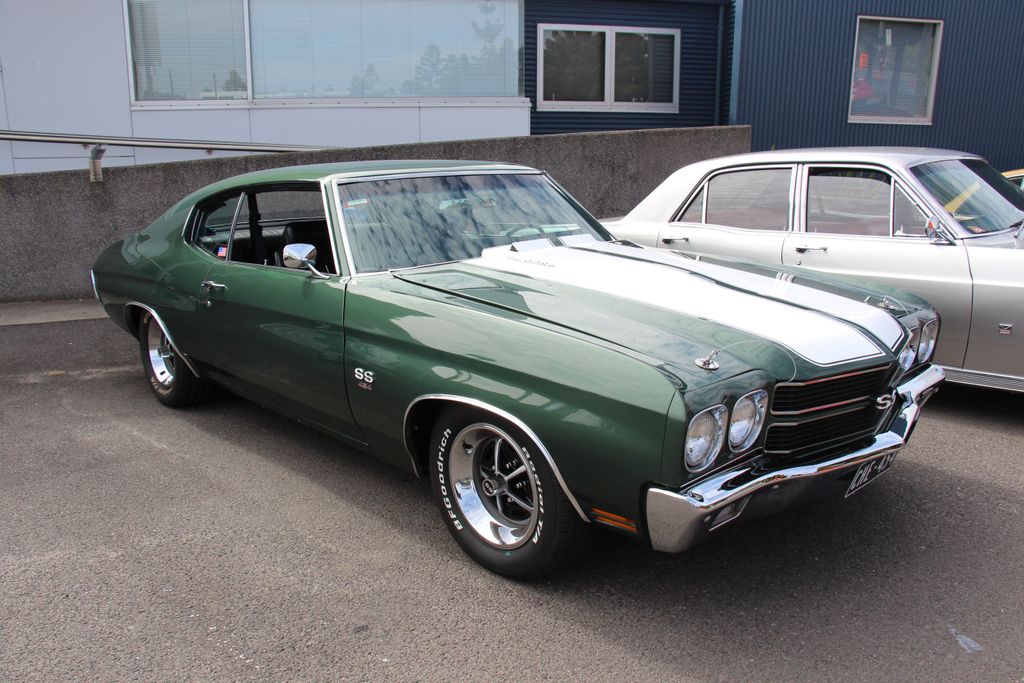
4. **1970 Chevrolet Chevelle SS 454**The 1970 Chevrolet Chevelle SS 454 is rightfully enshrined as a “legendary muscle car,” a true titan of the era that commanded immense respect both on the street and on the strip. This particular model stood out for its unbridled power, encapsulating the very essence of American performance. Its aggressive styling perfectly complemented the brute force that lay beneath its hood, making it an unmistakable icon of automotive might.
The heart of the Chevelle SS 454 was its formidable “454-cubic-inch V8 engine,” an engineering marvel capable of producing “up to 450 horsepower.” This incredible output positioned it as “one of the fastest cars of its time,” a statement that resonated deeply with performance enthusiasts. The combination of its raw power, robust drivetrain, and iconic muscle car aesthetics made it a formidable competitor and a benchmark for automotive excellence in its class.
Today, the 1970 Chevelle SS 454 continues to be “incredibly valuable,” a “favorite among collectors” due to its “aggressive styling, high performance, and relative rarity.” Well-preserved examples are known to “fetch prices well into the six-figure range,” underscoring its enduring appeal and significant place in classic car culture. It’s a testament to a time when horsepower ruled, and American manufacturers delivered some of the most thrilling machines ever conceived.
Car Model Information: 2021 Volkswagen Tiguan 2.0T SE R-Line Black
Name: Chevrolet Chevelle
Caption: 1970 Chevrolet Chevelle SS 396 Sport Coupe
Manufacturer: Chevrolet
Production: 1963–1977
ModelYears: 1964–1977
Class: Mid-size
Platform: GM A platform (RWD)
Layout: FR layout
Successor: Chevrolet Malibu
Categories: 1970s cars, All articles needing additional references, All articles that may contain original research, All articles with specifically marked weasel-worded phrases, All articles with unsourced statements
Summary: The Chevrolet Chevelle is a mid-sized automobile that was produced by the Chevrolet division of General Motors (GM) in three generations for the 1964 to 1977 model years. Part of the GM A-body platform, the Chevelle was one of Chevrolet’s most successful nameplates. Body styles included coupes, sedans, convertibles, and station wagons. The “Super Sport” versions were produced through the 1973 model year and Lagunas from 1973 through to 1976.
After a four-year absence, the El Camino was reintroduced as part of the new Chevelle lineup in 1964.
From 1964 to 1969, GM of Canada sold a modified version of the Chevelle that included a Pontiac-style grille, and a LeMans instrument panel, marketed as the Beaumont.
The Malibu was the top-of-the-line model to 1972, and completely replaced the Chevelle nameplate starting with the redesigned, and downsized 1978 model year.
Get more information about: Chevrolet Chevelle
Buying a high-performing used car >>>
Brand: Chevrolet Model: Chevelle SS 454
Price: $16,773 Mileage: 68,625 mi.
Read more about: 9 Legendary Muscle Cars That Vanished: A Nostalgic Drive into an Era’s Fading Glory
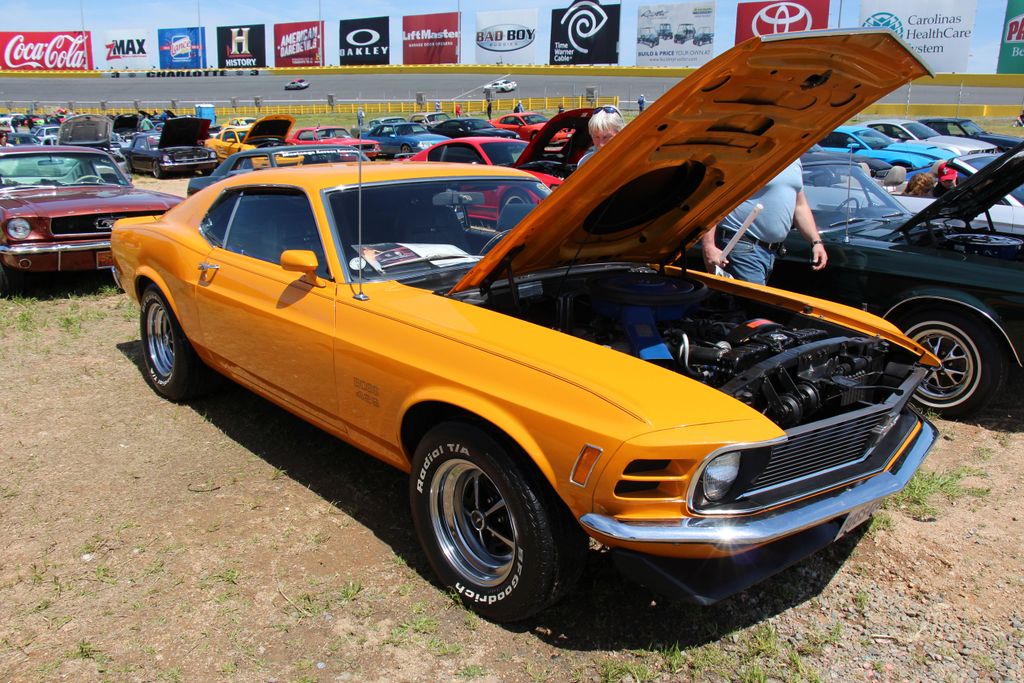
5. **1970 Ford Mustang Boss 429**The 1970 Ford Mustang Boss 429 stands as a towering figure in the pantheon of American muscle cars, conceived with a singular, ambitious purpose: “designed to dominate NASCAR.” This wasn’t merely another powerful Mustang; it was a homologation special, a street-legal machine born from the intense competition of professional racing. Its “limited-edition performance model” status immediately set it apart, making it a highly coveted vehicle from its inception.
At the core of the Boss 429’s legend was its monstrous “429-cubic-inch V8 engine,” a powerplant engineered for maximum performance. This engine was not just about brute force; it was a sophisticated piece of machinery intended to push the boundaries of what was possible in a production car. Combined with its “aggressive styling,” which conveyed its no-nonsense performance intent, the Boss 429 firmly established itself as a “muscle car icon,” leaving an indelible mark on automotive history.
Today, the 1970 Boss 429 Mustang remains “one of the most desirable classic American muscle cars.” Its combination of “distinctive design, high performance, and relative rarity” has cemented its status as “a favorite among collectors.” The value of these automotive legends has “skyrocketed in recent years,” with “well-preserved examples often selling for over $200,000,” reflecting its historical significance and unyielding appeal to enthusiasts and investors alike.
Car Model Information: 2023 Nissan Rogue SV
Caption: 1969 Boss 429
Layout: Longitudinal engine
Manufacturer: Ford Motor Company
Production: 1969–1970
Name: Mustang Boss 429
Class: Muscle car
BodyStyle: coupé
Assembly: Dearborn, Michigan
Height: 50.4 in
Abbr: on
Length: 187.4 in
Width: 71.7 in
Engine: 429 cuin
Transmission: manual transmission
Weight: 3870 lb
Categories: All Wikipedia articles needing clarification, All articles needing additional references, All articles with unsourced statements, Articles needing additional references from August 2008, Articles with short description
Summary: The Boss 429 Mustang is a high-performance Ford Mustang variant that was offered by Ford in 1969 and 1970. It featured a race-designed 429 cu in (7.0 L) semi-hemispherical head version of the big block 429 V8, offered in the car both to homologate the engine for NASCAR racing and to offer a bigger, more-powerful version of the popular small block 5 L Boss 302 Mustang.
The price of all the performance and modifications was steep: at nearly $5,000 a Boss 429 was roughly twice the price of the base model inline-6 Mustang. A total of 1,359 Boss 429s were produced.
Get more information about: Boss 429 Mustang
Buying a high-performing used car >>>
Brand: Ford Model: Mustang Boss 429
Price: $21,810 Mileage: 17,649 mi.
Read more about: Unleashing American Thunder: The 13 Most Iconic Muscle Cars Ever Built for Speed Enthusiasts
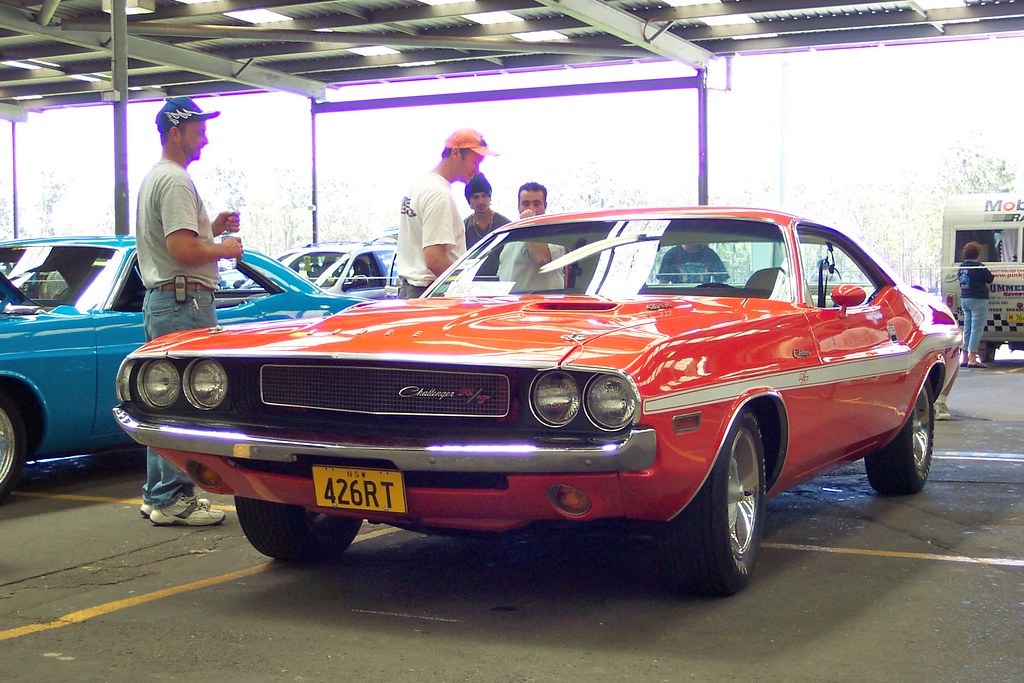
6. **1970 Dodge Challenger R/T**The 1970 Dodge Challenger R/T burst onto the scene as a formidable “direct competitor to the Chevrolet Camaro,” immediately making a statement with its “bold styling” and a compelling array of “engine options.” This muscle car was more than just a means of transportation; it was a declaration of power and presence, meticulously crafted to capture the hearts of performance enthusiasts. Its aggressive lines and purposeful stance made it an unmistakable presence on the road.
Among its available powerplants, the “mighty 426 HEMI V8” stood out, delivering legendary levels of horsepower and torque that cemented the Challenger R/T’s reputation as a serious contender in the fiercely competitive muscle car wars of the 1970s. This engine, synonymous with Dodge’s high-performance heritage, transformed the Challenger into a quarter-mile king and a street terror, offering an exhilarating driving experience that few rivals could match.
Today, the 1970 Dodge Challenger R/T continues to be “highly prized by collectors.” Its “distinctive design and powerful engine options” contribute significantly to its enduring value and appeal. “Well-maintained examples” of this iconic machine can frequently see “prices often exceeding $100,000,” a clear indication of its lasting legacy and the deep admiration it commands within the classic car community. It represents a quintessential piece of American automotive history, where style met unparalleled power.
Car Model Information: 2010 Dodge Challenger R/T
Name: Dodge Challenger
Production: 1969–1974,1977–1983,2008–2023
ModelYears: 1970–1974,1978–1983,2008–2023
Caption: 2015 Dodge Challenger SRT Hellcat
Manufacturer: Dodge
Categories: 1970s cars, 1980s cars, 2000s cars, 2010s cars, 2020s cars
Summary: The Dodge Challenger is the name of three generations of automobiles produced by the American automobile manufacturer Dodge. However, the first use of the Challenger name by Dodge dates back to 1959 for marketing a “value version” of the full-sized Coronet Silver Challenger.
From model years 1970 to 1974, the first-generation Dodge Challenger pony car was built using the Chrysler E platform in hardtop and convertible body styles sharing significant components with the Plymouth Barracuda.
The second generation, from model years 1978 to 1983, was a rebadged Mitsubishi Galant Lambda / Sapporo, a coupe version of an economical compact car.
The third and current generation is a full-size muscle car that was introduced in early 2008 initially as a rival to the evolved fifth generation Ford Mustang and the fifth generation Chevrolet Camaro.
In November 2021, Stellantis announced that the 2023 model year would be the final model year for both the LD Dodge Charger and LA Dodge Challenger, as the company will focus its plans on electric vehicles rather than fossil fuel-powered vehicles, due to tougher emissions standards required by the Environmental Protection Agency for the 2023 model year. Challenger production ended on December 22, 2023, and the Brampton, Ontario, assembly plant will be re-tooled to assemble an electrified successor.
Get more information about: Dodge Challenger
Buying a high-performing used car >>>
Brand: Dodge Model: Challenger
Price: $15,850 Mileage: 83,491 mi.
Read more about: Unleashing American Thunder: The 13 Most Iconic Muscle Cars Ever Built for Speed Enthusiasts
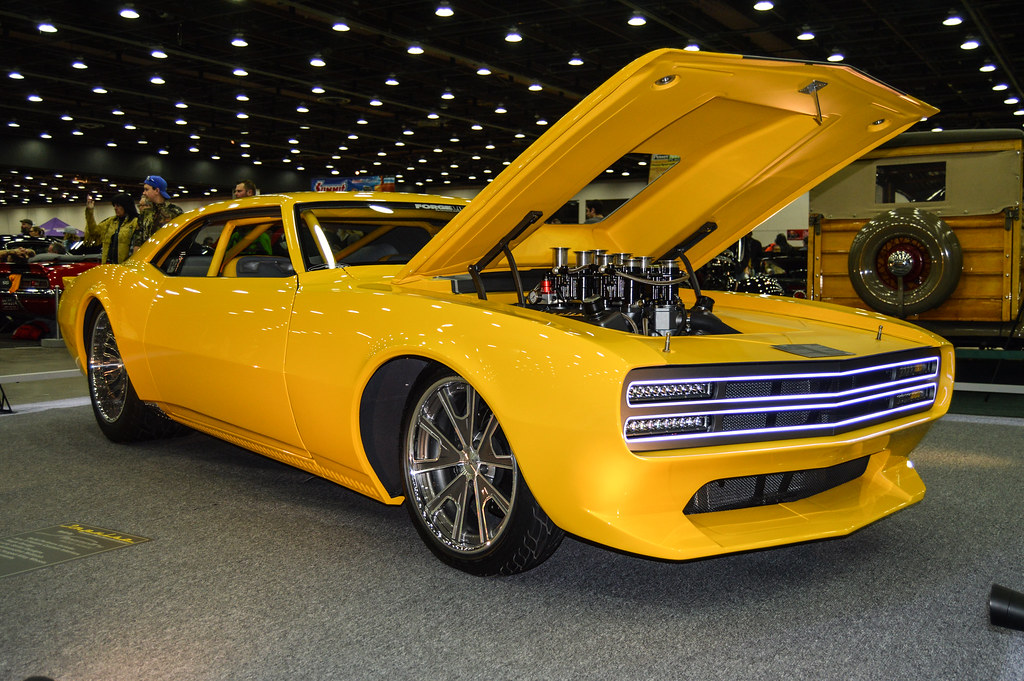
7. **1970 Plymouth Hemi Cuda**The 1970 Plymouth Hemi Cuda is not just a muscle car; it’s an automotive legend, widely recognized as one of the most powerful and valuable vehicles ever to emerge from the golden age of American performance. With its “striking fastback design” and a comprehensive “range of powerful engine options,” the Barracuda line itself was impressive, but the Hemi Cuda variant elevated it to an entirely different stratum of desirability and capability.
The sheer ferocity of this machine was primarily attributed to its “powerful 426-cubic-inch Hemi V8 engine.” This particular engine configuration was a marvel of engineering, renowned for its hemispherical combustion chambers that allowed for incredible power output, making the Hemi Cuda a true “favorite among collectors” for its brute strength and raw acceleration. It was a car that didn’t just move; it launched with an intensity that few contemporaries could rival.
The 1970 Plymouth Hemi Cuda’s “distinctive design” combined with its legendary engine ensures its place as a cornerstone of muscle car lore. Its rarity, especially with the Hemi engine, has seen its value “skyrocketed in recent years,” with some “examples selling for over $3 million at auction.” This astronomical valuation solidifies its status not just as a classic, but as an automotive treasure, representing the pinnacle of an era defined by horsepower and audacious design.
Having explored the roaring muscle and groundbreaking supercars that set the tone for the 1970s, our journey now ventures “Beyond the Roar.” This next chapter uncovers the decade’s often-underestimated contributions to automotive innovation, luxury, and the development of truly unforgettable rides that catered to a wider spectrum of needs and desires. From understated comfort to surprising efficiency and pop culture phenomena, these vehicles broadened the definition of what a classic car could be. They showcase a remarkable diversity that continues to captivate enthusiasts and collectors alike, proving that the ’70s were far more than just a horsepower contest.
Car Model Information: 2021 Volkswagen Tiguan 2.0T SE R-Line Black
Caption: 1970 Hardtop Coupe
Name: Plymouth Barracuda
Manufacturer: Plymouth (automobile)
Production: 1964–1974
Assembly: Fenton, Missouri,Hamtramck, Michigan,Maywood, California,Windsor, Ontario
Layout: Front-engine, rear-wheel drive layout
Class: Pony car
Categories: 1970s cars, All articles with dead external links, All articles with unsourced statements, Articles with dead external links from February 2018, Articles with dead external links from January 2022
Summary: The Plymouth Barracuda is a two-door pony car that was manufactured by Chrysler Corporation from 1964 through 1974 model years.
The first-generation Barracuda was based on the Chrysler A-body and was offered from 1964 until 1966. A two-door hardtop (no B-pillar) fastback design, it shared a great majority of parts and bodywork with the Plymouth Valiant, except for the distinctive wraparound rear glass.
The second-generation Barracuda, though still Valiant-based, was heavily redesigned. Built from 1967 through 1969, it was available as a two-door in fastback, notchback, and convertible versions.
The third generation, offered from 1970 until 1974, was based on the Chrysler E-body, exclusive to it, and the slightly larger Dodge Challenger. A completely new design, the two-door Barracuda was available in hardtop and convertible body styles.
Get more information about: Plymouth Barracuda
Buying a high-performing used car >>>
Brand: Plymouth Model: Hemi Cuda
Price: $16,773 Mileage: 68,625 mi.
Read more about: 9 Legendary Muscle Cars That Vanished: A Nostalgic Drive into an Era’s Fading Glory
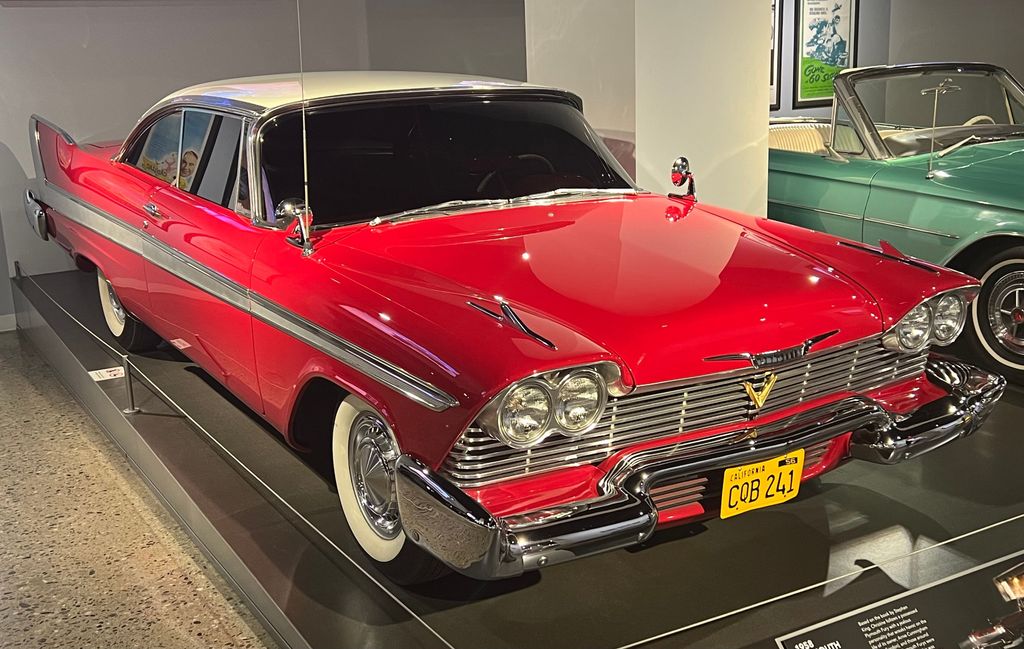
8. **1975 Plymouth Fury**The 1975 Plymouth Fury, a full-size car, carved out its niche by offering a compelling blend of comfort and an “intimidating stance” that commanded presence on the road. While it wasn’t engineered for breakneck speed, its primary focus was on delivering a “luxurious ride and big-body confidence on the highway,” a quality highly valued by consumers looking for a refined driving experience in a substantial package. This emphasis on passenger comfort and stately cruising capability made it a distinctive offering within the Plymouth lineup.
Beyond its physical attributes, the Fury earned a special place in the hearts of many by becoming “very familiar to TV and movie buffs.” Its distinctive look and presence, particularly its appearances in popular shows like *Starsky & Hutch*, imbued it with a unique “nostalgia value” that transcends mere specifications. This cultural imprint transformed the Fury into more than just a car; it became a recognizable icon of 1970s television.
Today, the 1975 Plymouth Fury is “cherished among collectors” not solely for its performance, but also for its cultural significance and increasing rarity. Finding “Furys in good condition nowadays” is becoming progressively challenging, making well-preserved examples highly sought after. With a current market value ranging from $12,000 to $22,000, it represents an accessible entry point into classic car ownership, offering a tangible piece of automotive and entertainment history.
Car Model Information: 1973 Plymouth Fury Custom Suburban
Name: Plymouth Fury
Caption: 1959 Plymouth Sport Fury
Manufacturer: Plymouth (automobile)
Aka: Plymouth Sport Fury (1959, 1962–1971),Plymouth VIP (1966–1969)
Production: 1958–1978
ModelYears: 1959–1978
Assembly: bulleted list
Class: Full-size,Mid-size,Full-size,Mid-size,Full-size,Mid-size
Layout: FR layout
Predecessor: Plymouth Belvedere,Plymouth Plaza,Plymouth Savoy
Successor: Plymouth Gran Fury,Plymouth Gran Fury
Sp: us
Categories: 1960s cars, 1970s cars, All articles needing additional references, Articles needing additional references from December 2018, Articles with short description
Summary: The Plymouth Fury is a model of automobile that was produced by Plymouth from 1955 until 1989. It was introduced for the 1956 model year as a sub-series of the Plymouth Belvedere, becoming a separate series one level above the contemporary Belvedere for 1959. The Fury was a full-size car from 1959 until 1961, then a mid-size car from 1962 until 1964, again, a full-size car from 1965 through 1974, and again, a mid-size car from 1975 through 1978. From 1975 until 1977, the Fury was sold alongside the full-size Plymouth Gran Fury. In 1978, the B-body Fury was the largest Plymouth, and by 1979, there was no large Plymouth. This product gap was filled in 1980 with the R-body Gran Fury, followed by the M-body Fury in 1982. Production of the last V8, RWD Plymouth Fury ended at the Kenosha Main assembly plant in Kenosha, WI, on December 23, 1988. Unlike its sibling brand, Dodge, Plymouth would not live to see the resurgence of the large, V8/RWD sedan.
Get more information about: Plymouth Fury
Buying a high-performing used car >>>
Brand: Plymouth Model: Fury
Price: $21,500 Mileage: 91,485 mi.
Read more about: Unleashing the Beasts of ’62: A Deep Dive into 8 Legendary American Muscle Car Grandfathers

9. **1975 Honda Civic CVCC**The 1975 Honda Civic CVCC might have been a “diminutive car,” but it undeniably “made a huge splash” by introducing a level of ingenuity and efficiency that was revolutionary for its time. This little car was instrumental in reshaping perceptions of Japanese automobiles in North America, proving that small cars could be both practical and sophisticated. Its impact went far beyond its compact dimensions, heralding a new era of automotive design focused on resourcefulness.
Central to its groundbreaking status was the “fuel-efficient CVCC engine,” an engineering marvel that allowed the Civic to meet stringent U.S. emission standards without the need for a catalytic converter. This was a significant technological achievement in the 1970s, providing a clean and economical alternative at a time when environmental concerns and fuel crises were becoming increasingly prominent. The CVCC engine was a testament to Honda’s forward-thinking approach to automotive challenges.
Further solidifying its appeal, the 1975 Civic CVCC was celebrated for being “lightweight, easy to maneuver, and very reliable.” These qualities made it an ideal vehicle for urban commuting and appealed to a growing segment of buyers prioritizing practicality and low ownership costs. It lacked the raw power of contemporary muscle cars, but its focus on “innovation and sense” made it a highly intelligent choice.
While it “lacks the muscle car oomph” that defined many of its American contemporaries, the 1975 Civic CVCC remains a “collector’s choice for owners who enjoy innovation and sense.” Its historical importance in helping Honda expand its footprint in North America, combined with its renowned reliability and efficiency, secures its place as a cherished classic. With market values between $8,000 and $15,000, it stands as a testament to engineering foresight.
Car Model Information: 2023 Nissan Rogue SV
Last1: Roeser
First: Justin
Date: Fri Dec 31 2021 16:00:00 GMT-0800 (Pacific Standard Time)
Title: Milestones: The Journey of Honda in America.
Url: https://images.squarespace-cdn.com/content/v1/583c9490be659429d110c269/1663197766454-U2WPYP6SW44BIP7T11BY/AVANTS~1.JPG
Journal: Avants
Volume: 3
Issue: December 2022
Pages: 29
AccessDate: 4 December 2022
Categories: All articles with unsourced statements, Articles containing Japanese-language text, Articles with short description, Articles with unsourced statements from December 2020, Automotive technology tradenames
Summary: CVCC, or Compound Vortex Controlled Combustion (Japanese: 複合渦流調整燃焼方式, Hepburn: Fukugō Uzuryū Chōsei Nenshō Hōshiki), is an internal combustion engine technology developed and trademarked by the Honda Motor Company.
The technology’s name refers to its primary features: Compound refers to the use of two combustion chambers; Vortex refers to the vortex generated in the main combustion chamber, increasing combustion speed, and Controlled Combustion refers to combustion occurring in a timely, controlled manner.
The engine innovatively used a secondary, smaller auxiliary inlet valve to feed a richer air-fuel mixture to the combustion chamber around the spark plug, while the standard inlet valve fed a leaner air-fuel mixture to the remainder of the chamber, creating a more efficient and complete combustion.
Get more information about: CVCC
Buying a high-performing used car >>>
Brand: Honda Model: Civic CVCC
Price: $21,810 Mileage: 17,649 mi.
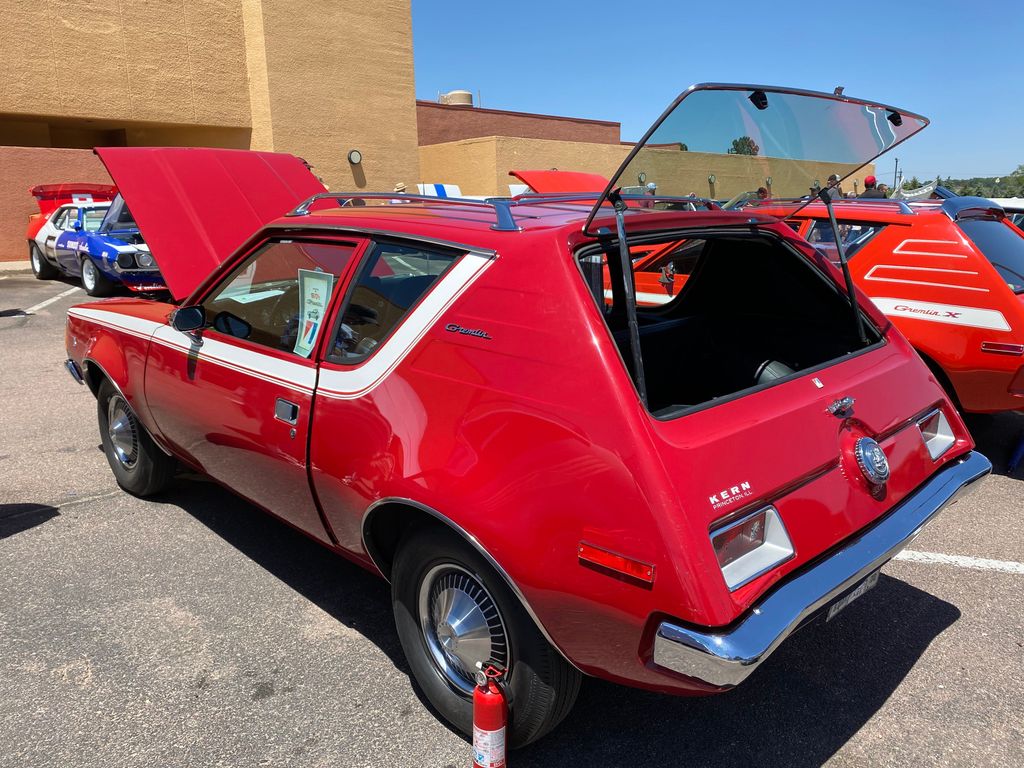
10. **1970 AMC Gremlin**The 1970 AMC Gremlin is a true “cult car,” distinguished by its “unusual personality” and a “quirky design with hatchback shape” that defied conventional aesthetics of the era. As “America’s first real subcompact,” the Gremlin was a bold, if unconventional, attempt by American Motors Corporation to compete head-on with the growing influx of smaller, fuel-efficient foreign vehicles. Its distinctly “clipped tail” immediately set it apart, making it an unmistakable presence on the road.
Initially perceived as a “thrift-store car” due to its budget-friendly positioning, the Gremlin offered surprising versatility that challenged its humble origins. Buyers had the option to equip it with a “V8 punch,” transforming this seemingly modest subcompact into a vehicle capable of delivering “decent handling” and unexpected performance. This ability to combine economy with optional power added another layer to its intriguing character.
Today, the 1970 AMC Gremlin is “more commonly restored for its uniqueness than for performance,” a clear indicator of its enduring appeal as a piece of automotive eccentricity. It offers a “quirky taste of 1970s nostalgia,” captivating collectors who appreciate its unconventional design and historical significance as a pioneering American subcompact. With current market values ranging from $9,000 to $16,000, it’s a testament to the diverse tastes within the classic car community.
Read more about: From ‘Ugly’ Ducklings to Coveted Classics: 14 American Cars That Are Now Collector’s Gold
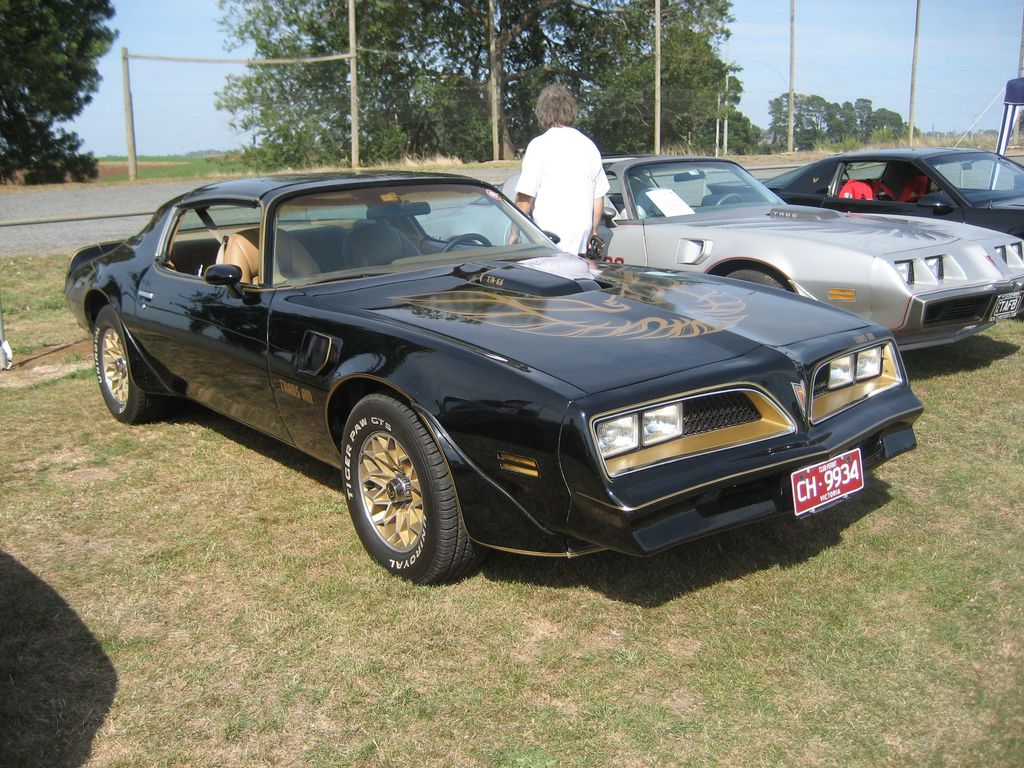
11. **1977 Pontiac Firebird Trans Am**The 1977 Pontiac Firebird Trans Am transcended its identity as merely a car, evolving into a bona fide “cultural phenomenon” largely due to its unforgettable “starring role in Smokey and the Bandit.” This movie cemented the Trans Am’s image in popular culture, associating it forever with high-speed chases, rebellious spirit, and an undeniable sense of cool. Its presence on the silver screen ignited a fervor that few other vehicles could match.
Visually, the Trans Am was a masterpiece of aggressive styling, famously adorned with its “black-and-gold paint job and ‘screaming chicken’ decal on the hood.” This bold aesthetic ensured that the car “made heads turn wherever it traveled,” becoming an instant icon of 1970s automotive bravado. Its distinct appearance was as much a part of its legend as its performance, capturing the imagination of a generation.
Underneath its flashy exterior, the Trans Am was far from just a show pony; it “wasn’t lacking in muscle, either,” equipped with a robust “6.6-liter V8 engine.” This powerful heart delivered the performance expected of a true American muscle car, offering exhilarating acceleration and a thrilling driving experience. The seamless “mix of flash and muscle ensured its popularity at the time,” appealing to both performance enthusiasts and those drawn to its flamboyant style.
Today, the 1977 Pontiac Firebird Trans Am retains its substantial “worth as a collector’s item.” Its enduring fame from film, combined with its aggressive styling and powerful V8 engines, makes it a highly desirable classic. With market values fluctuating between $25,000 and $50,000, it remains a vibrant symbol of a decade that celebrated both audacious design and unadulterated power.
Car Model Information: 2023 Nissan Rogue SV
Name: Pontiac Firebird
Caption: The second, third, and fourth generations of,the Pontiac Firebird Trans Am
Manufacturer: Pontiac (automobile)
Production: February 23, 1967 – August 30, 2002
ModelYears: 1967 – 2002
Class: Pony car,Muscle car
Platform: GM F platform
Related: Chevrolet Camaro
Layout: Front engine, rear-wheel-drive layout
Categories: 1970s cars, 1980s cars, 1990s cars, 2000s cars, All articles with dead external links
Summary: The Pontiac Firebird is an American automobile built and produced by Pontiac from the 1967 to 2002 model years. Designed as a pony car to compete with the Ford Mustang, it was introduced on February 23, 1967, five months after GM’s Chevrolet division’s platform-sharing Camaro. This also coincided with the release of the 1967 Mercury Cougar, Ford’s upscale, platform-sharing version of the Mustang.
The name “Firebird” was also previously used by GM for the General Motors Firebird series of concept cars in the 1950s.
Get more information about: Pontiac Firebird
Buying a high-performing used car >>>
Brand: Pontiac Model: Firebird Trans Am
Price: $21,810 Mileage: 17,649 mi.
Read more about: Unleashing American Thunder: The 13 Most Iconic Muscle Cars Ever Built for Speed Enthusiasts
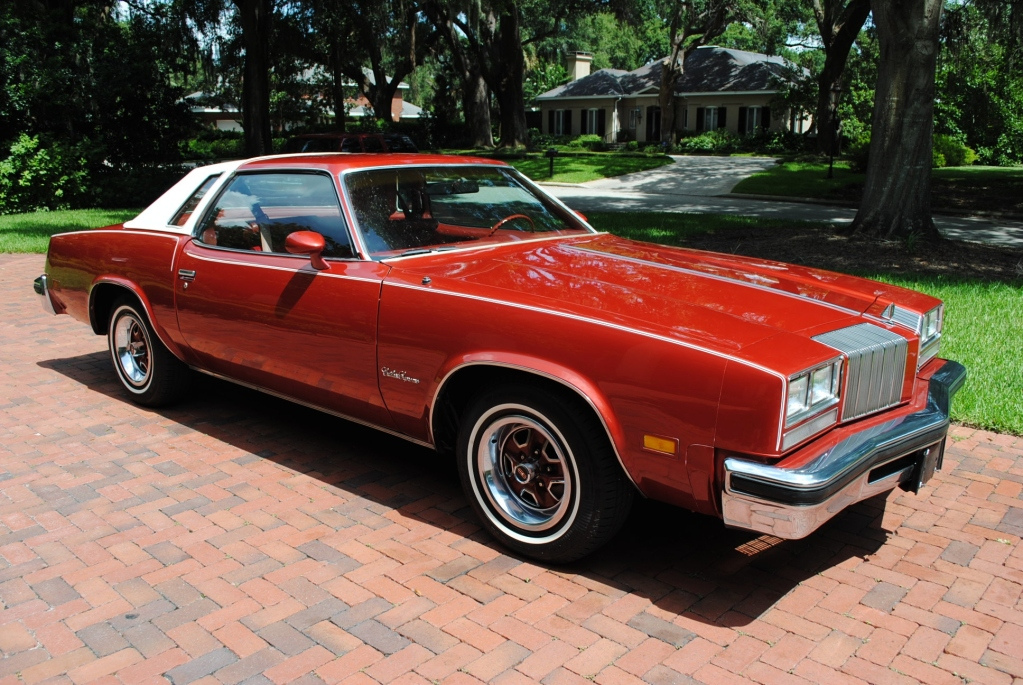
12. **1977 Oldsmobile Cutlass Supreme**The 1977 Oldsmobile Cutlass Supreme masterfully balanced “luxury and performance in a stylish mid-size vehicle,” becoming one of the undisputed darlings of the American automotive landscape. Its widespread appeal led it to become “one of the best-selling cars of its time,” a testament to its successful combination of elegant design, comfortable ride, and practical sizing that resonated with a broad audience. It exemplified mainstream automotive excellence.
Designed with passenger comfort in mind, the Cutlass Supreme offered a “smooth, quiet ride,” creating a serene cabin experience for both driver and occupants. It came equipped with a “range of engines, a V8 among them,” providing ample power for daily driving while maintaining its refined demeanor. This blend of attributes made it a versatile choice, equally at home on city streets or open highways.
For modern collectors, the 1977 Cutlass Supreme presents a particularly attractive proposition due to its “easy to restore and maintain” characteristics. The sheer volume produced in the ’70s means there are “plenty of parts and details available” in the aftermarket, simplifying the restoration process. This makes it a “sensible, budget-friendly choice for newer collectors” seeking a classic car experience without prohibitive maintenance challenges, with values ranging from $10,000 to $18,000.
Car Model Information: 2023 Nissan Rogue SV
Name: Oldsmobile Cutlass Supreme
Manufacturer: Oldsmobile
Production: 1965–1997
Layout: FR layout
Successor: Oldsmobile Intrigue
Class: Personal luxury car
Caption: 1970 Oldsmobile Cutlass Supreme
Categories: 1960s cars, 1970s cars, 1980s cars, 1990s cars, All Wikipedia articles written in American English
Summary: The Oldsmobile Cutlass Supreme is a mid-size car produced by Oldsmobile between 1966 and 1997. It was positioned as a premium offering at the top of the Cutlass range. It began as a trim package, developed its own roofline, and rose during the mid-1970s to become not only the most popular Oldsmobile but the highest selling model in its class.
It was produced as a rear-wheel drive two-door hardtop, sedan, and station wagon into the 1980s, and a convertible through 1972. In 1988 Oldsmobile sought to capitalize on the brand equity of the Cutlass Supreme marque by replacing it with a downsized front-wheel drive model based on the General Motors W platform.
When production ended there was no direct replacement for the Cutlass Supreme, although the Intrigue introduced for 1998 was designed in size and price to replace all the Cutlass models.
Get more information about: Oldsmobile Cutlass Supreme
Buying a high-performing used car >>>
Brand: Oldsmobile Model: Cutlass Supreme
Price: $21,810 Mileage: 17,649 mi.
Read more about: 9 Legendary Muscle Cars That Vanished: A Nostalgic Drive into an Era’s Fading Glory
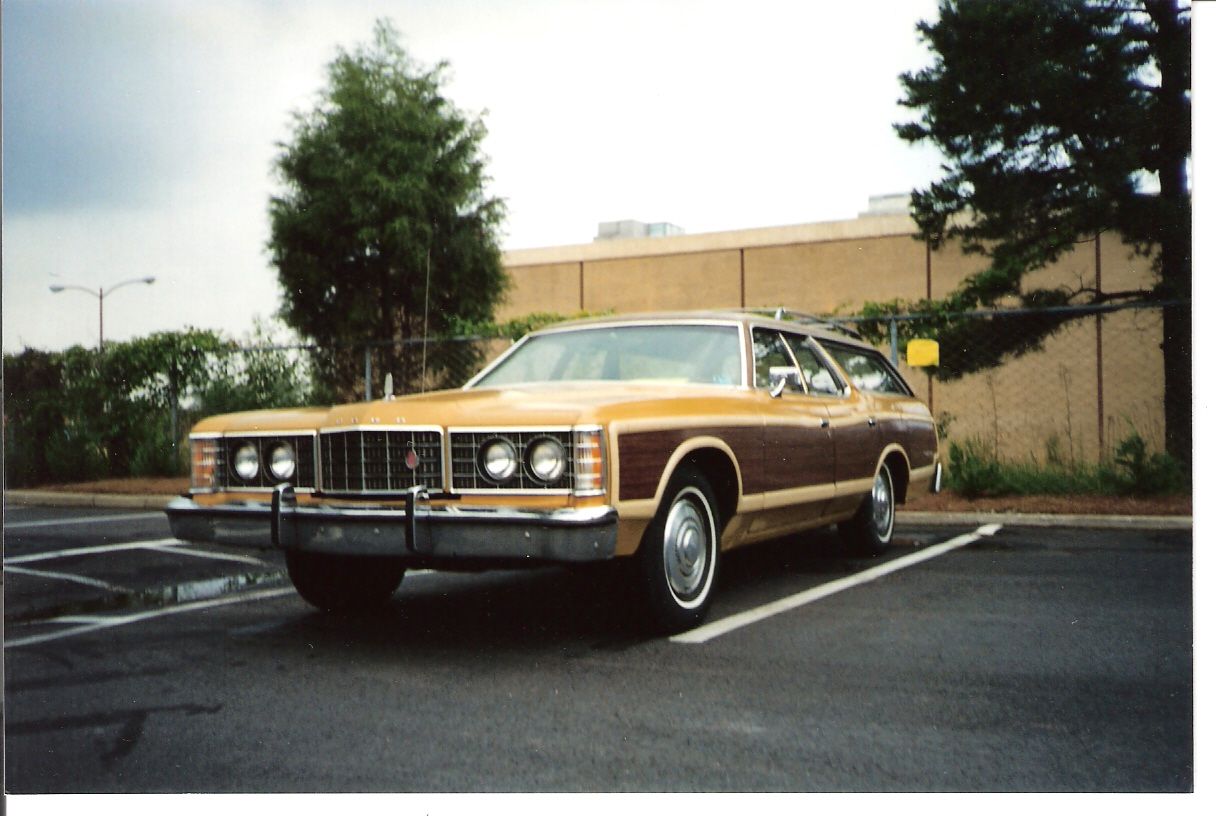
13. **1973 Ford Country Squire**The 1973 Ford Country Squire stands as the quintessential representation of 1970s suburban family life, instantly recognizable as “the most recognizable station wagon of the time.” Its distinctive character was largely defined by its iconic “phony wood-grain paneling,” a stylistic flourish that, combined with its “roomy interior,” perfectly encapsulated the era’s family-friendly aesthetic and practical demands. This vehicle was more than transport; it was a mobile extension of the American home.
Embodying the role of the ultimate “family hauler,” the Country Squire was engineered to accommodate the diverse needs of a bustling household. Its generous interior space provided ample room for children, groceries, and all manner of suburban excursions. Powering these domestic adventures was a “big V8 engine,” ensuring it “could haul kids, groceries, and even a trailer” with confident ease, proving its capability beneath its genteel exterior.
Today, the 1973 Ford Country Squire continues to evoke powerful feelings of nostalgia, making it a “favorite at vintage car shows among those who love the nostalgia of the vintage family wagons.” It serves as a tangible link to a bygone era of family road trips and everyday suburban living. With market values typically between $8,000 and $15,000, it offers an affordable and charming piece of Americana for enthusiasts.
Car Model Information: 2023 Nissan Rogue SV
Caption: 1988–1989 Ford LTD Country Squire
Name: Ford Country Squire
Manufacturer: Ford Motor Company
Class: Full-size,station wagon
BodyStyle: station wagon
ModelYears: 1950–1991
Predecessor: 1941 Ford#1948
Related: Mercury Colony Park,Ford Country Sedan,Ford Ranch Wagon
Categories: 1960s cars, 1970s cars, 1980s cars, 1990s cars, All articles with dead external links
Summary: The Ford Country Squire is a series of full-size station wagons that were assembled by American automaker Ford. Positioned as the top-level station wagon of the Ford division, the Country Squire was distinguished by woodgrain bodyside trim. From 1950 through the 1991 model years, eight generations of the Country Squire were produced. Following the discontinuation of Edsel Bermuda, Mercury marketed the Mercury Colony Park as a divisional counterpart of the Country Squire, sharing bodywork and trim while the Mercury was not available with a six cylinder engine and was more expensive due to the optional equipment on the Ford that was standard on the Mercury.
As part of the full-size Ford model range, the Country Squire was the top trim package station wagon counterpart of several model lines. For its first two generations, the Country Squire was based upon the Ford Custom Deluxe and the Ford Crestline that replaced it, along with the more modestly equipped Ford Country Sedan which was identical in dimensions except for the woodgrain appearance and minimal standard equipment. For its next three generations, the Country Squire was a distinct model range; initially sharing its trim with the Ford Fairlane, the Country Squire later adopted trim of the Ford Galaxie. For its final two generations, the Country Squire became a counterpart of Ford LTD and the Ford LTD Crown Victoria after its downsizing for the last generation, while sharing multiple passenger accommodation duties with the Ford Aerostar.
The Country Squire was discontinued as part of the development of the 1992 Ford Crown Victoria and passenger carrying duties were given to the Ford Windstar. The decline in full-size station wagon sales meant the Crown Victoria was exclusively a four-door sedan. The 41-year production run of the Country Squire is the third-longest of a Ford car nameplate in North America, surpassed only by the Ford Thunderbird and Ford Mustang which is to date still in production.
The term squire is a British term that refers to a village leader or a lord of the manor, which is also called a “squire”, and the term was applied to members of the landed gentry.
Get more information about: Ford Country Squire
Buying a high-performing used car >>>
Brand: Ford Model: Country Squire
Price: $21,810 Mileage: 17,649 mi.
Read more about: Get Ready to Drool: 14 Vintage Rides Every Boomer Dad Dreams Of Owning

14. **1973 Mercury Cougar Convertible**The 1973 Mercury Cougar Convertible presented a compelling alternative for those who desired the “look of a muscle car but with a softer, more elegant touch.” Positioned as the “cousin of the Mustang,” it distinguished itself with a slightly “classier” demeanor, featuring a more “premium interior and sporty looks” that appealed to a discerning buyer seeking refinement alongside performance. It was a muscle car for a more sophisticated palate.
What truly elevated the Cougar Convertible’s appeal was its “rare convertible body style,” making it a highly desirable variant of an already stylish car. The ability to drop the top added an extra layer of allure, enhancing the driving experience with open-air exhilaration. This combination of luxury touches and an open cockpit experience set it apart from its more utilitarian counterparts.
Powering its elegant cruising capabilities was a “351 V8” engine, providing “more than ample cruising ability, especially with the top down.” This engine ensured that the Cougar Convertible delivered a smooth yet potent performance, perfectly suited for leisurely drives or spirited jaunts. The blend of its powerful engine, luxurious appointments, and convertible rarity makes it a truly special machine.
Because “not many were made in convertible form,” the 1973 Mercury Cougar Convertible is now “very much sought after by collectors.” Its unique position as a blend of muscle car aesthetics, luxury, and open-top driving pleasure ensures its lasting desirability. Commanding market values from $15,000 to $30,000, it remains a captivating and elegant classic that embodies a particular brand of 1970s automotive charm.
Car Model Information: 2023 Nissan Rogue SV
Name: Mercury Cougar
Caption: 1969 Mercury Cougar (first generation)
Manufacturer: Mercury (automobile)
Layout: Front-engine, rear-wheel-drive layout
ModelYears: 1967–1997,1999–2002
Class: Pony car,Personal luxury car,Mid-size car,Sport compact
Categories: 1960s cars, 1970s cars, 1980s cars, 1990s cars, 2000s cars
Summary: The Mercury Cougar is a series of automobiles that was sold by Mercury from 1967 to 2002. The model line is a diverse series of vehicles; though the Cougar nameplate is most commonly associated with two-door coupes, at various stages in its production, the model also was offered as a convertible and a hatchback. During its production as the mid-size Mercury line, the Cougar was also offered as a four-door sedan and five-door station wagon.
In production for 34 years across eight generations (skipping the 1998 model year), the Cougar is second only to the Grand Marquis (36 years) in the Mercury line for production longevity. 2,972,784 examples were produced, making it the highest-selling Mercury vehicle. During the 1970s and 1980s, the marketing of the Mercury division was closely associated with the Cougar, with promotional materials advertising Mercury dealers as “The Sign of the Cat” with big cats atop Lincoln-Mercury dealer signs. Cat-related nameplates were adopted by other Mercury lines, including the Bobcat and Lynx.
During its production, the Cougar was assembled at the Dearborn Assembly Plant (part of the Ford River Rouge Complex) in Dearborn, Michigan from 1967 until 1973, San Jose Assembly (Milpitas, California) from 1968 into early 1969, Lorain Assembly (Lorain, Ohio) from 1974 until 1997, and at Flat Rock Assembly (Flat Rock, Michigan) from 1999 through 2002.
Get more information about: Mercury Cougar
Buying a high-performing used car >>>
Brand: Mercury Model: Cougar Convertible
Price: $21,810 Mileage: 17,649 mi.
Read more about: Unleashing American Thunder: The 13 Most Iconic Muscle Cars Ever Built for Speed Enthusiasts
The 1970s, as this in-depth look has vividly demonstrated, was an era of profound and diverse automotive achievement. From the raw, unadulterated power of the muscle car legends to the groundbreaking innovation of subcompacts and the refined luxury of family haulers, the decade produced an extraordinary lineup of vehicles. These cars, each with its unique story and character, were not merely machines; they were cultural touchstones, technological statements, and cherished companions on countless journeys. Their enduring appeal at shows and auctions, and their escalating values, are clear indicators that these 14 classic cars from the ’70s are indeed “long gone but not forgotten,” their legacies firmly cemented in the rich tapestry of automotive history.


